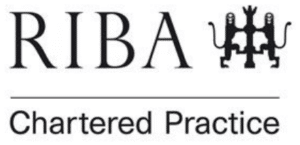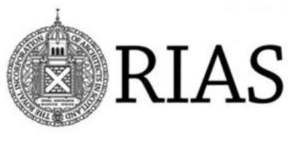How to design for healthy indoor air quality in houses:
An awareness of how to create good indoor air quality conditions in buildings is something that must be a concern for all architects. Our clients ask about it quite often now which has prompted me to write down some information on the subject to explain our approach to it.
There are a number of different aspects that are important and which one can target to make sure that a house is healthy:
Relative Humidity:
The optimal conditions for a healthy interior exist when the relative humidity range is between 30 % and 60%. The shaded area in the diagram below shows the safe zone and the implications of what can happen in buildings where conditions occur that are are either sides of this zone.
Carbon Dioxide levels.
For healthy levels of CO2 we should aim for them to be less that or equal 1500 parts per million. It would be common for levels to get higher than this if for example two people sharing a bedroom had the window closed.
Volatile Organic Compounds:
Chemicals in building materials, house contents and cleaning materials are all potential sources of these. “Off gassing “ from solid materials can cause eye, nose and throat irritations as well as potentially more serious health impacts. A lot can be done to reduce and mitigate this source of pollution. The simplest thing to start with to combat it is good ventilation, but also use of natural materials where possible, and taking care to select low VOC products for example for paint and for cleaning materials will make a huge difference.
Fine Particles or Particulate Matter:
The air in our homes (as well as outside them) will contain a proportion of small particles. When the amount gets too high it can be harmful to us and in particular particles smaller than 2.5 microns are considered particularly harmful to human health. We can reduce the effect of particles created by cooking or burning toast for example by having good extraction in kitchens. For the whole house, ventilation is the key for this. There have been concerns about open fires and woodburning stoves in this regard and speculation as to whether they will continue as a heat source as they are known to be a significant source of particulates smaller than 2.5 microns. My view is that by selecting efficient woodburning appliances which are “Ecodesign” and “Clearskies” approved, and by using only well dried timber, we can limit particulate emissions to acceptable levels.
My Approach to Healthy Indoor Air Quality good practice:
My approach to these issues which I learned during my Passive house training course and various courses and books on the subject, is to ventilate buildings continuously in a controlled fashion so that approximately a third of the air in a building is changed for outside air every hour. This should be done through a heat exchanger so that approximately 90% of the heat is recovered. When this is done properly in a new house for example, the house is noticeably fresher, healthier and greatly more energy efficient than a house that relies on trickle vents in windows, manual window opening and traditional bathroom and kitchen extractor fans. This system of controlled ventilation is known as mechanical ventilation with heat recovery. It does need to be properly designed, sized and balanced to suit the building, but if properly done it addresses all of the concerns that are mentioned above as well as its other main benefit which is energy efficiency.
When dealing with older buildings of traditional construction and in particular when retrofitting or upgrading them, indoor air quality can be greatly impacted by the choice of materials and insulation for example. Generally natural materials will facilitate what is known as “moisture buffering”, that is the ability to absorb and later give off moisture in a manner that can help avoid spikes of either low or high relative humidity from developing in the building whilst also avoiding surface condensation and mould growth.
We discuss these issues on projects regularly. I hope this short summary will answer some questions and help awareness.
Here are some examples of Projects where this methodology was applied
Grand New Country Home – Thomas Robinson Architects
Gleneagles new build residence – Thomas Robinson Architects
New build Farmhouse – Gartocharn – Thomas Robinson Architects
Farmhouse Refurbishment | Residential Architect Project – Thomas Robinson Architects
Avenel, Plot 4 – Thomas Robinson Architects
Avenel, Plot 2 – Thomas Robinson Architects
Contemporary Home – Strathblane – Thomas Robinson Architects
New Build Farm House in Gartocharn | Residential Projects – Thomas Robinson Architects
















